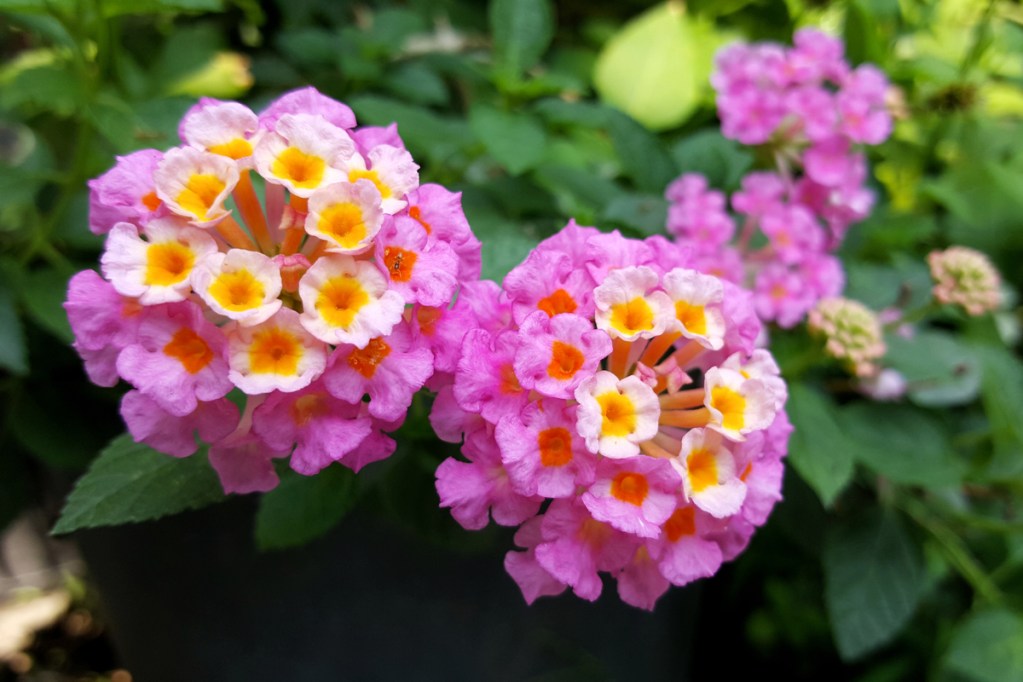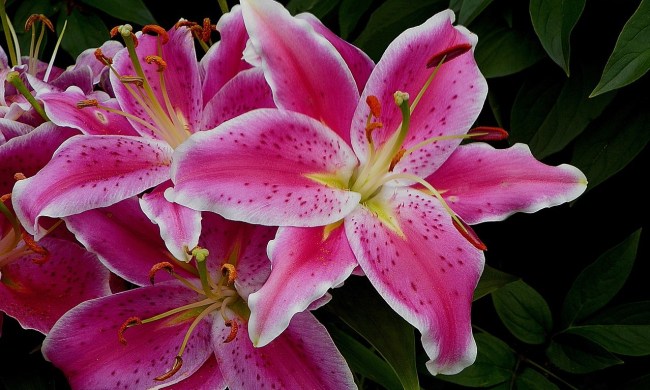
Lantana is a beautiful and colorful flower that comes in several bright colors, including orange and pink. Not only is it lovely for humans, but it also attracts tons of butterflies, bees, and even hummingbirds. If that sounds like the perfect flower to you, then you’re in luck! Lantana is fairly easy to grow, and this guide to lantana care will answer all your questions, from where to plant it to what other plants it pairs well with. So grab your lantana seedlings and a trowel and let’s get started!
Planting lantana

Start planting your lantana after the last frost of the year has passed. Lantana is a tropical plant, and it thrives in hot, humid conditions and frost can damage it, especially if it is young or recently planted. Choose a planting location that is in full sun, with rich, well-draining soil. Lantana can tolerate some light shade, but the flowers will be brighter and more numerous if your lantana is in full sun. Lantana enjoys wet soil, but it can still develop root rot or other fungal infections if left in standing water for too long.
Neutral or slightly acidic soil is ideal, as is soil rich in organic matter. Mixing compost into the soil before you plant your lantana is a great way to improve the richness, drainage, and pH of your soil. Lantana will also grow in sandy soils, but keep in mind you may need to water it more frequently, since the soil will drain faster.
Lantana care

As long as it’s getting plenty of sun, lantana requires little care. Water your lantana weekly or whenever the soil dries out. Despite its love of moist soil, lantana is a surprisingly drought-tolerant plant. However, it doesn’t bloom as much or as brightly in dry weather, so supplemental watering is recommended whenever possible.
In addition to regular watering, your lantana will benefit from deadheading. Removing the faded or wilted flowers doesn’t just keep your garden looking fresh and neat; it also encourages your lantana to grow new flowers to replace the old ones. The old flowers make a great addition to a compost pile if you have one.
Lantana goes dormant in autumn and needs less water and care. During winter, your care will depend on both the climate you live in and whether you want to grow it as an annual or perennial. Lantana can survive frost but rarely survives a hard freeze. In mild climates, your lantana may benefit from increased protections such as mulch, covering, or a windbreak. In places with harsher climates, you may need to move your lantana indoors or plant new plants in the spring.
Can you grow lantana indoors?

You can grow this plant indoors, as well as in greenhouses. Growing lantana indoors is similar to growing it outdoors, with only a few differences. First, make sure the container you choose has drainage holes. Use well-draining potting soil or a mix of potting soil and compost for the best results, and set your lantana in a sunny window. Since lantana needs full sun, it can sometimes struggle to get enough light indoors. If your lantana is starting to look a little sad, you can supplement natural light with a grow light.
Since the indoors is easier to control than the outdoors, you won’t need to worry as much about frosts and freezes, but you should still try to keep your lantana warm. Avoid placing it near drafts or air vents, which can blow cold, dry air onto your plant and make it weaker and more vulnerable to pests.
Lantana companion plants

Lantana grows well with many other plants, making it easy to incorporate into an existing garden and fun to use when planning a new one! If you’re planning a pollinator garden, lantana goes well with the following:
- Petunia
- Verbena
- Nasturtium
- Marigold
- Nemesia
- Sage
- Lavender
- Yarrow
- Butterfly bush
- Butterfly weed
- Angelonia
All these make for a beautiful display, with pink, purple, and gold flowers that are gorgeous but easy to care for. If you want a garden that puts your lantana in the spotlight, consider accenting it with ornamental grasses, such as fountain grasses. These grasses are beautiful, but they won’t compete with your lantana as much for attention.
Lantana is a beautiful flower that can draw butterflies and hummingbirds to your garden. It’s beautiful on its own, but it also looks lovely surrounded by any number of companion plants. Lantana is easy enough for beginners to grow, and also beautiful enough to look impressive, even in an expert’s garden. Whether you choose to grow lantana on its own or as part of a larger display, indoors or out, and as an annual or perennial, you’re sure to love this colorful flower!



